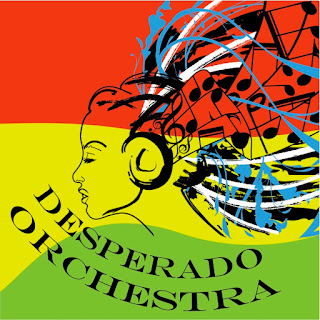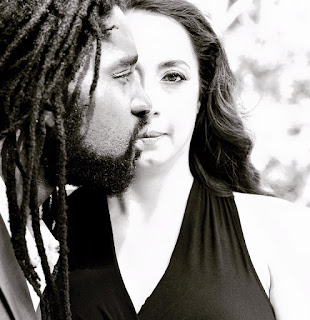Start Talking: The State of Music and Culture in Relation to Industry (By Megan Fong)
As a musician and an educator, this article is written as an attempt to give people a way to filter out cultural totalitarianism and to give tools to help critically think about the cultural state of America and how the music industry, artists and the freedom of expression are jeopardized by American cultural totalitarianism. In this article I want to generate a dialogue and share my knowledge and thoughts based on the facts of how the mass production of art today suffocates the cultural growth and freedom of expression for the public and all artists. It is important to acknowledge that the largest competitions are not the other unknown or underground artists, but the major corporations and the academic elitism in America that perpetuates social divides within the public's cultural perspectives where very few alternative methods to express freedom through art exist.
As media is now accessible on a global scale, we should be aware of how American images are mass produced all over the world. These images are a cultural snapshot of American entertainment and our values. Our lack of inter-artistic-relations and dialogues between each other that criticize or even gives opposed opinions to the American mass produced cultural images and idols, only creates a larger divide between the elitist and the underprivileged artists. Jeffrey C. Goldfarb writes in his book The Politics of Small Things,
Major corporations control the media, and the media as private enterprises depend upon advertising revenues for their profits. Politicians and other state agents are major news sources. The media, needing economic resources and information sources, are careful not to bite the hand that feed them, so present a view of the world that supports the interests of corporate power and the state. (5).
Goldfarb is writing mostly about politics and refers quite a bit to the Soviet bloc and the events leading up to and after 9/11 in the US. However, in this statement I am drawing a parallel from all major media outlets: music, news, art, and politics. They mass produce information, images, and products that support and contribute only to serve the corporate power's financial gain– cultural totalitarianism. This creates a vacuum, a homogeneous sphere of culture where there is no room for variation. With this perspective, I theorize that homogeneity is the oppression of diversity and cultural totalitarianism is the oppression of the freedom of expression.
In July of 2014, four months ago I was living in China. On this particular day, as I prepared for my daily lessons as an English teacher, I heard a song on the radio from an emerging American artist. The lyrics were about a party, a bar, drinking and it didn't hold very much more substance than "a night out in the club". I discovered later as I skimmed through online music articles that the song, "Fancy" was produced by T.I featuring a new artist, originally from Australia named Iggy Azalea. I dug a little deeper to discover a video "Work" where Iggy is dressed with a sheer, see-thru top and x-shaped materials strategically placed over her nipples. In the middle of the video she gives a provocative lap dance. I was shocked that this is the artist who made it to China. She was a cultural representative of American popular art in a global perspective. A few months later, I returned home to the US and just as I was settling back into America, re-discovering the luxuries of being home, I heard "Anaconda". This was a song produced by Eric Bellinger, featuring an artist, Niki Minaj giving a lap dance to another artist, Drake. It was very sad to me that these two artists would pervert their freedom of expression and women's liberation to give the public such a distorted perspective of art.
There is no social awareness or political commentary on sexuality in these videos. It is insensitive to create a fantasized sexual video capitalizing off the images that some women have no choice but to do as work. Some women become enslaved in the sex industry and suffer at the hands of prostitution rings around the world, forced to sell their bodies for sex. To know that mass media exists to support the views of corporate powers– bear with me as I continue down this line of thought– then, these women are ultimately stripping down and lap dancing only for the company's financial gain. Goldfarb says, "that there are two fundamentally different types of truth, factual and philosophical". (16). The factual truth is that the corporate powers that perpetuate these videos (such as Viacom, one of the largest media outlets for music) are benefiting through the artists' mass produced images and songs. The philosophical truth is that these images, being mass produced, expose the world to believing that being a pop star, a musician or an artist who is a woman means it's acceptable to give a lap dance or prance around half naked and sell it as artists exercising their freedom of expression. Goldfarb continues,
[t]he existence of alternatives centers on the constitution of public freedom and the possibilities of a democratic culture, both of which are constituted in and through the domain of a free public...in the relationship between truth and power...[the distinction between totalitarianism and liberalism]... is made. (17).
The choices of artists relate directly to their power of freedom of expression. But with the domination of a corporate artist's images in the media, the alternative images and freedoms of expression are invisible to the public and artistic community. With no alternative images or mass support of alternative products and examples of freedom of expression, the public and other aspiring artists are exposed solely to defining their freedom of expression through what the media mass produces. My suggestion here is that we take the philosophy of the politics of small things, that "formal freedom is not enough...[and] that this does not mean that constituted alternatives are less important. Quite the contrary, here and now, the need to provide consequential alternatives to dominant modes of understanding and action is pressing." (131).
There are many conversations and methods of attempting to counter cultural totalitarianism, and one of them is created through the relationship of underground artists. The lack of conversation and comradery between the academic artists, the underground artists, the working artists and aspiring artists perpetuates American cultural totalitarianism. In the book, Performing Asian America, about Asian American performing arts, Josephine Lee presents an idea that I believe exists as a parallel for some American artists. That they "are less interested in working toward collective or global change for equality...[and that]... their perceived selfishness and ingratitude are the result of... being drawn into a particular ideology of consumerism and individualism... [that] this is not so much a problem (or consequence) of new wealth and assimilation as it is a product of the ideology of American enterprise, which re-froms human action and relationships in order to sustain and perpetuate itself."(166) If more artists supported each other and demanded more alternative forms of music, image, and art then the corporate mass produced artists would have less of a chance of dominating in the media and potentially a diversity of sound and images could emerge through the masses.
My questions here are whether artists are ready to break down the walls that separate them from each other? Can artists collectively re-define themselves? And are artists ready to begin radically attacking the oppressive cultural institutions that suffocate their freedom of expression?
Radically changing the environment to help liberalize the public to create spaces for freedom of expression is not easy. Barbara Smith writes, "Because I came out in the context of Black liberation, women's liberation, and–most significantly– the newly emerging Black feminist movement that I was helping to build, I worked from the assumption that all of the 'isms' were connected...Nobody sane would want any part of the established order. It was the system–white supremacist, misogynistic, capitalist and homophobic–that made our lives so hard to begin with."(180, The Truth that Never Lies) All the issues and "isms" that individuals are fighting for to create equal opportunities can divide us and create more political vacuums. Smith continues to write,
The liberation politics of the earlier era, which relied upon radical grassroots strategies to eradicate oppression, have been largely replaced by an assimilationist "civil rights" agenda. The most visible elements of the movement have put their faith almost exclusively in electoral and legislative initiatives, bolstered by mainstream media coverage, to alleviate discrimination. When the word "radical" is used at all, it means confrontational, "in your face" tactics, not strategic organizing aimed at the roots of oppression. (180, The Truth that Never Lies)
I am proposing that artists consider Smith's thoughts and attempt to find a radical, strategic and organized fashion of opposition to American cultural totalitarianism. Through conversation and the building of relationships artists can further develop the definitions of freedom of expression, producing music that speaks to more than just sex, violence, money and consumption. But we need allowance for all artists to have the opportunities and spaces to create and develop their art. It is the elitism of funders and patrons of art that we must demand give more time and resources to artists from all different political, ethnic and socio-economic backgrounds. bell hooks writes "[i]f a cultural climate of support is established at the outset of a young artist's commitment to doing art work, there is much greater likelihood that this work will develop and mature."(140, Art on My Mind) Fighting cultural totalitarianism to me, not only means creating a place to discover and support each other, but also to demand that institutions give financial support toward a diversity of artist's works. hooks continues,
Artistic production would be enriched in our culture if grant givers would create a system of inter-art relations that would reward discussion and engagement–the sharing of knowledge, information, and skills across boundaries of race, class, gender, age, etc. Many of those of us who have developed a mature artistic practice testify that meeting certain individual artists and learning from them was crucial to our development. (141, Art on My Mind)
Without the previous opportunities that any artist has had to further their craft, they would not be able to develop their perspectives. Without the support of an artist's family, friends, or community, artists will not have a place to share their theories and express their artistic freedom. Cultural totalitarianism's biggest threats are through artists themselves demanding the rights and opportunities for all. So, what do we do? I suggest that artists consider these perspectives as they mature and create new opportunities for themselves– don't forget about your responsibilities and the factual truths. If artists continue to self-censor their opinions and do not attempt to create bonds with each other and voice perspectives in publicly free spaces, America will continuously produce elite sources of funding and a dominant mass media with products that perpetuate cultural totalitarianism.



Comments
Post a Comment